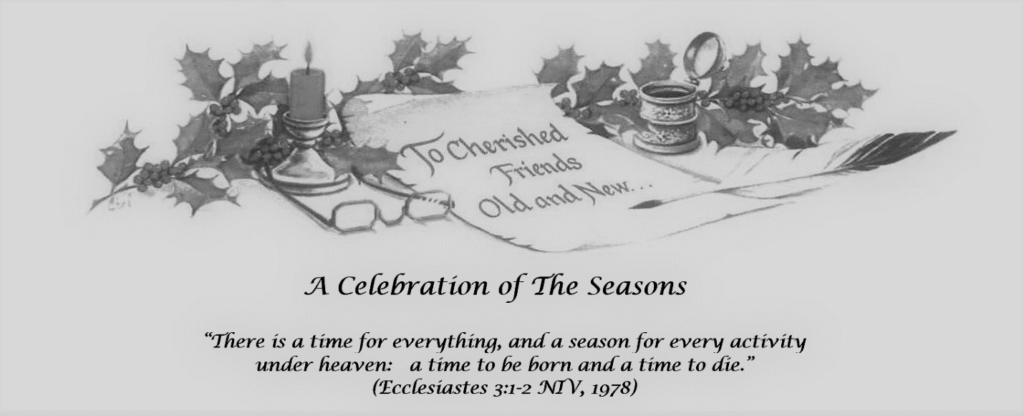
Not exactly numbered among the traditional texts that have become so familiar to us in our celebrations of Christmas over the years. Yet over the years, Christmas traditions have slowly eroded, the victims of commercialism, cynicism, and political correctness. Not that the Christmas story has lost its relevance or is no longer significant. Or that its meaning is no longer needed or has gone out of style. On the contrary, the need has never been greater or more urgent.
But unless we overcome the commercialism and cynicism, unless we reach beyond tradition, the birth of the Christ child remains a quaint little story lost among the glitz and glitter of the season. To do so, we must understand that the season of His birth, “a time to be born,” was the beginning of the season of His death, “a time to die,” in order that He might save His people from their sin.
We cannot fully fathom the angelic proclamation of “Peace on earth, goodwill to man,” until we have experienced the peace that transcends all understanding. That peace with God that comes from accepting Christ as our personal Savior. A relationship made possible because of Jesus’ death on the cross. He was born for this death.
We cannot truly kneel with the shepherds alongside the cradle in worship of the Christ child, until we have first knelt with the centurion at the foot of the cross and confessed that “surely this man is the Son of God!” A confession in the face of eternal death that leads to new birth and eternal life in Christ.
We cannot wholly comprehend the innocence found in that newborn babe wrapped in swaddling clothes and lying in a manger, until we acknowledge with Pontius Pilate “I find no fault in this man.” His innocence offered in exchange for our guilt. His death, bearing our guilt, so that we might be born anew.
We cannot entirely appreciate the significance of the gifts that the Magi presented in celebration of the Christ child’s birth, until we accept the gift that Jesus offers through His death on the cross. “For God so loved the world that He gave His one and only Son, that whoever believes in Him shall not perish but have eternal life.” Accepting death on a cross so that He might offer us the gift of new birth.
We cannot really understand the ancient prophecies concerning the birth of the Prince of Peace, until we come to understand why the King wore a crown of thorns. “But He was pierced for our transgressions, He was crushed for our iniquities…and the Lord has laid on Him the iniquity of us all.” A crown of thorns, worn to His death, so that we might wear a crown of life.
Clearly the old traditions still have significance today. But only as we look beyond the season of Christ’s birth to the season of His death and resurrection. For only then can we begin to realize that the seasons come full circle. Because the season of His death makes possible a new birth for us. Freely offered to all if we only believe and receive. That is the real reason we celebrate the season of His birth.
So, as you pause to reflect this Christmas season remember: the shepherds found the newborn babe wrapped in swaddling clothes and laying in a manger because there was no room for Him in the Inn. The disciples found an empty shroud lying in an empty tomb because death could not keep Him in the grave. He was born to die for our sins. He is risen to offer us new life if we believe and receive.
A Time to Be Born – “This will be a sign to you: You will find a baby wrapped in cloths and lying in a manger.” (Luke 2:12, NIV 1984).
A Time to Die – “You are looking for Jesus the Nazarene, who was crucified. He has risen! He is not here. See the place where they laid him.” (Mark 16:6, NIV 1984).
Jesus always has been and still is the reason for the seasons. Celebrate the seasons and may God bless you one and all!
“It was for this very reason I came.” Jesus of Nazareth, Gospel of St. John.


